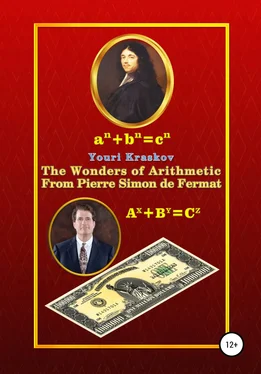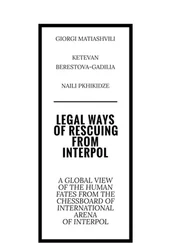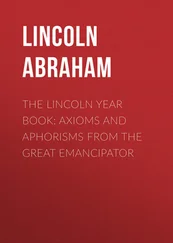In pt. 2-30 of the letter Fermat to Mersenne, the task is set:
“ Find two quadrate-quadrate, the sum of which is equal to a quadrate-quadrate or two cubes, the sum of which is a cube ” [9, 36]. The dating of this letter in the edition by Tannery is doubtful since it was written after the letters with a later dating. Therefore, it was most likely written in 1638. From this it is concluded that the FLT is appeared in 1637??? But have the FLT really such a wording? Even if these two tasks are special cases of the FLT, how it can be attributed to Fermat what about he could hardly even have guessed at that time? In addition, the Arabic mathematician Abu Mohammed al Khujandi first pointed to the insolubility of the problem of decomposing a cube into a sum of two cubes as early else the 10th century [36]. But the insolvability of the same problem with biquadrates is a consequence of the solution of the problem from pt. 2-10 of the same letter: " Find a right triangle in numbers whose area would be equal to a square ." The way of proving Fermat gives in his 45th remark to Diophantus' “Arithmetic”, which begins like this: “ If the area of the triangle were a square then two quadrate-quadrates would be given, the difference of which would be a square .” Thus, at that time, the wording of this problem and the approach to its solution were very different even from the particular case of FLT.
In order no doubts to appear, attempts were made to somehow “substantiate” the fact that Fermat could not have the proof mentioned in the original of FLT text. See for example, https://cs.uwaterloo.ca/~alopez-o/math-faq/node26.html(Did Fermat prove this theorem?). Such an "argument" to any of the sensible people related to science, it would never come to mind because it cannot be convincing even in principle since in this way any drivel can be attributed to Fermat. But the initiators of such stuffing clearly did not take into account that this is exactly evidence of an organized and directed information campaign on the part of those who were interested in promoting Wiles’ “proof”.
An exception is one of the greatest English mathematicians John Wallis (see pt. 3.4.3).
Obviously, if it come only about the wording of the FLT, it would be very unwise to write it in the margins of the book. But Fermat’s excuses about narrow fields are repeated in other remarks for example, in the 45 th, at the end of which he adds: “Full proof and extensive explanations cannot fit in the margins because of their narrowness” [36]. But only one this remark takes the whole printed page! Of course, he had no doubt that his Gascon humor would be appreciated. When his son, Clement Samuel who naturally found a discrepancy in the notes prepared for publication, was not at all surprised by this since it was obvious to him that right after reading the book it was absolutely impossible to give exact wording of tasks and theorems. The fact that this copy of Diophantus’ “Arithmetic” with Fermat's handwritten notes didn’t come to us suggests that even then this book was an extremely valuable rarity, so it could have been bought by another owner for a very high price. And he was of course not so stupid to trumpet about it to the whole world at least for his own safety.
The text of the last FLT phrase: “ I have discovered a truly amazing proof to this, but these margins are too narrow to put it here ”, obviously does not belong to the essence of the theorem, but for many mathematicians it looks so defiant that they tried in every way to show that it's just empty a Gascon boasting. At the same time, they did not notice neither humor about the margins nor the keyword “discovered”, which is clearly not appropriate here. More appropriated words here could be, say, “obtained” or “founded”. If Fermat’s opponents paid attention to this, it would become clear to them that the word “discovered” indicates that he received the proof unexpectedly by solving the Diophantus' task, to which a remark was written called the FLT. Thus, mathematicians have unsuccessfully searched during the centuries for FLT proof instead of looking for a solution to the Diophantus' task of decomposing a square into the sum of two square. It seemed to them that the of Diophantus' task was clearly not worth their attention. But for Fermat it became perhaps the most difficult of all with it he has worked on, and when he did cope with it, then received the discovery of the FLT proof as a reward.
It is curious that the Russian-language edition this fundamental work of Euler was published in 1768 under the title "Universal Arithmetic" although the original name "Vollständige Anleitung zur Algebra" should be translated as the Complete Introduction to Algebra. Apparently, translators (students Peter Inokhodtsev and Ivan Yudin) reasonably believed that the equations are studied here mainly from the point of view of their solutions in integers or rational numbers i.e. by arithmetic methods. For today's reader this 2-volume edition is presented as a Chinese literacy because along with the highly outdated Russian language and spelling, there is simply an incredible number of typos. It is unlikely that today's RAS as the heiress of the Imperial Academy of Sciences, which published this work, understands its true value, otherwise it would have been reprinted a long time ago in a modern and accessible form.
Here there is an analogy between algebra and the analytic geometry of Descartes and Fermat, which looks more universal than the Euclidean geometry. Nevertheless, Euclidean arithmetic and geometry are the only the foundations, on which algebra and analytical geometry can appear. In this sense, the idea of Euler to consider all calculations through the prism of algebra is knowingly flawed. But his logic was completely different. He understood that if science develops only by increasing the variety of equations, which it is capable to solve, then sooner or later it will reach a dead end. And in this sense, his research was of great value for science. Another thing is that their algebraic form was perceived as the main way of development, and this later led to devastating consequences.
Just here is the concept of a “number plane” appears, where real numbers are located along the x axis, and imaginary numbers along the y axis i.e. the same real, only multiplied by the “number” i = √-1. But along that come a contradiction between these axes – on the real axis, the factor 1 nis neutral, but on the imaginary axis no, however this does not agree with the basic properties of numbers. If the “number” i is already entered, then it must be present on both axes, but then there is no sense in introducing the second axis. So, it turns out that from the point of view of the basic properties of numbers, the ephemeral creation in the form of a number plane is a complete nonsense.
According to the Basic theorem of arithmetic the decomposition of any natural number into prime factors is always unambiguous, for example, 12=2×2×3 i.e. with other prime factors this number like any other, is impossible to imagine. But for “complex numbers” in the general case this unambiguity is lost for example, 12=(1+√–11)×(1+√–11)=(2+√–8)×(2+√–8) In fact, this means the collapse of science in its very foundations. However, the generally accepted criteria (in the form of axioms) what can be attributed to numbers and what is not, as there was not so still is not.
Читать дальше





![Theresa Cheung - The Dream Dictionary from A to Z [Revised edition] - The Ultimate A–Z to Interpret the Secrets of Your Dreams](/books/692092/theresa-cheung-the-dream-dictionary-from-a-to-z-r-thumb.webp)






